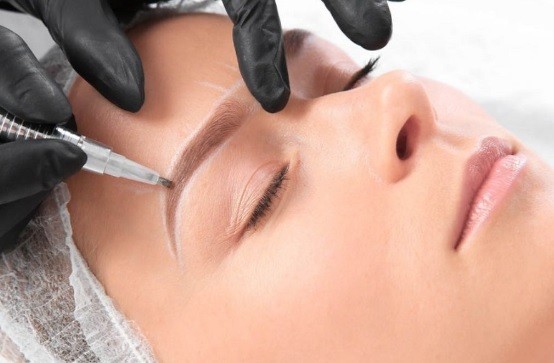Possible risks when getting tattoos
When cosmetic tattoo sharp tools must be used to pierce the skin and inject pigments deep into the skin, so complications can occur. Tattooing causes skin damage. A needle penetrating the skin can cause damage, infection or disease transmission. Furthermore, adding substances to color the tattoo can cause skin reactions. Complications and troubles caused by tattoos include:
Infected tattoo area spreads disease: Common infections caused by staphylococcus and streptococcus bacteria cause the tattoo area to become inflamed with pus. Sometimes more serious, deep infection causes erysipelas, gangrene, and septicemia. Infections of this type are rare today due to the use of clean instruments and early antibiotics.
Medicine has encountered a number of cases of syphilis and leprosy with disease lesions appearing right at the tattoo site. Nowadays, tattoos can also spread more serious diseases such as hepatitis B, hepatitis C, and HIV. Other viral diseases such as warts and molluscum contagiosum can also be transmitted by tattooing.
React to tattoo substance: The substance used for tattooing is introduced into the skin and causes a local reaction. The reaction that occurs causes itching, tingling, redness, and swelling. It can happen early, often after weeks or years. Symptoms may be lichenoid reactions. Sometimes the reaction spreads beyond the tattoo area, causing eczema, contact dermatitis or, more seriously, exfoliative dermatitis.
– Some cases cause a granulomatous inflammatory reaction that is difficult to treat.
– Mercury in tattoo substances can cause local skin redness or systemic reactions.
– Chromium causes green patches on the skin.
– Cobalt also causes pale blue skin and some people develop uveitis.
– The tattoo area has an inflammatory reaction when exposed to sunlight.
 |
Difficult to observe skin cancer and aggravate existing skin damage: For patients with chronic skin diseases such as psoriasis, atopic dermatitis,… especially during the active stage of the disease, tattoo accidentally creating local trauma to the skin, causing new skin damage to appear locally or throughout the body.
In particular, tattoos covering pre-existing pigmented lesions such as moles, pigmented birthmarks (brown, black, blue)…, are believed to increase the risk of skin cancer. This will make it difficult to monitor and diagnose this injury.
Is tattoo removal easy?
After getting a tattoo that doesn’t look right, doesn’t work as expected, or “thinks about it”, many people go to a specialized facility or cosmetic center to have the tattoo removed.
Lasers and skin abrasion can be used to remove tattoos… but there is a risk of causing scarring, some people even have keloid scars. Sometimes surgery to cut the tattoo area and skin grafting is required in cases where the tattoo is deep and dark.
Modern beauty trends
Cosmetic tattooing is a hot beauty trend today, very popular, especially among young people. They can tattoo any area of the body with a variety of shapes and colors. In addition to tattoos, they also use materials threaded into the body (body-mod).
Tattoos are related to beliefs, customs and rituals. Many ancient tribe members tattooed their bodies during festivals, tattooing warriors or hunters, people diving into the sea to find pearls…
Tattooing is a way people use sharp objects to pierce the skin and inject colored substances deep into the dermis. Professional tattooists use electronic needles, while “amateurs” often use regular needles and Chinese ink. Tattoo substances have different colors:
– Dark blue color using carbon and Chinese ink.
– Red uses cinnabar.
– Light blue using cobalt salt.
– Green uses chromium.
– Yellow color uses cadmium.
– The brown color uses materials such as ocher and iron.
How to ensure safety when tattooing
– You should go to a reputable, professional cosmetic facility and ask to sterilize tools and replace tattoo needles to minimize possible risks.
– Avoid tattooing areas with previous pigmented lesions such as birthmarks, moles… to minimize the risk of skin cancer.
– Consider for people who show signs of allergy to the ingredients of tattoo ink, have previous allergies or chronic skin diseases.
– Go to a qualified medical facility for examination and treatment when you suspect post-tattoo damage.
Dr. Pham Dang Bang (Professional Director at TTCliNIC)

